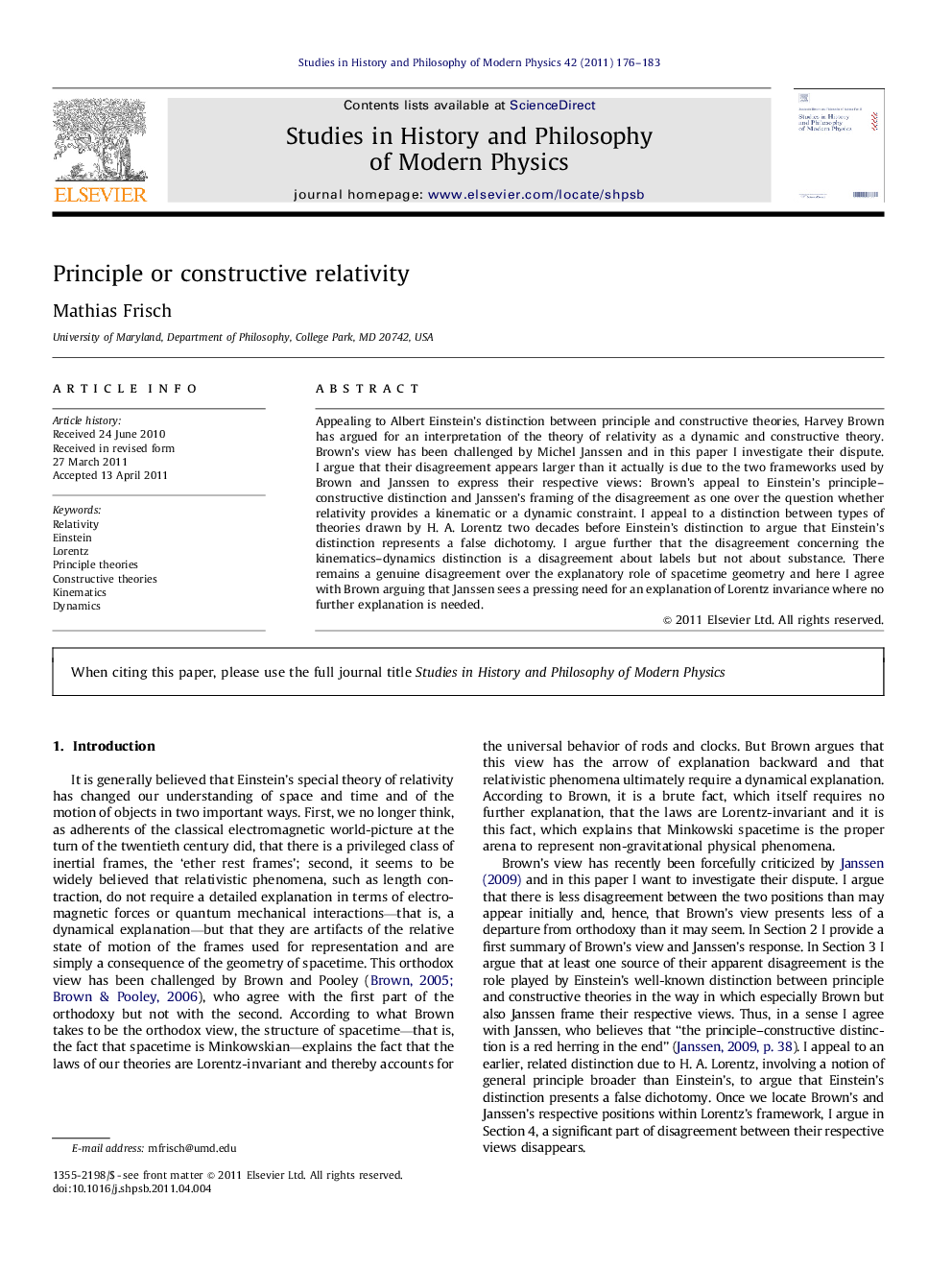| Article ID | Journal | Published Year | Pages | File Type |
|---|---|---|---|---|
| 1161305 | Studies in History and Philosophy of Science Part B: Studies in History and Philosophy of Modern Physics | 2011 | 8 Pages |
Appealing to Albert Einstein's distinction between principle and constructive theories, Harvey Brown has argued for an interpretation of the theory of relativity as a dynamic and constructive theory. Brown's view has been challenged by Michel Janssen and in this paper I investigate their dispute. I argue that their disagreement appears larger than it actually is due to the two frameworks used by Brown and Janssen to express their respective views: Brown's appeal to Einstein's principle–constructive distinction and Janssen's framing of the disagreement as one over the question whether relativity provides a kinematic or a dynamic constraint. I appeal to a distinction between types of theories drawn by H. A. Lorentz two decades before Einstein's distinction to argue that Einstein's distinction represents a false dichotomy. I argue further that the disagreement concerning the kinematics–dynamics distinction is a disagreement about labels but not about substance. There remains a genuine disagreement over the explanatory role of spacetime geometry and here I agree with Brown arguing that Janssen sees a pressing need for an explanation of Lorentz invariance where no further explanation is needed.
► Special relativity is a Principle theory in Lorentz's sense, providing a universal constraint on dynamical laws. ► The universal principle Lorentz-invariance does not have the character of a ‘cosmic coincidence’ in need of an explanation in terms of spacetime geometry.
